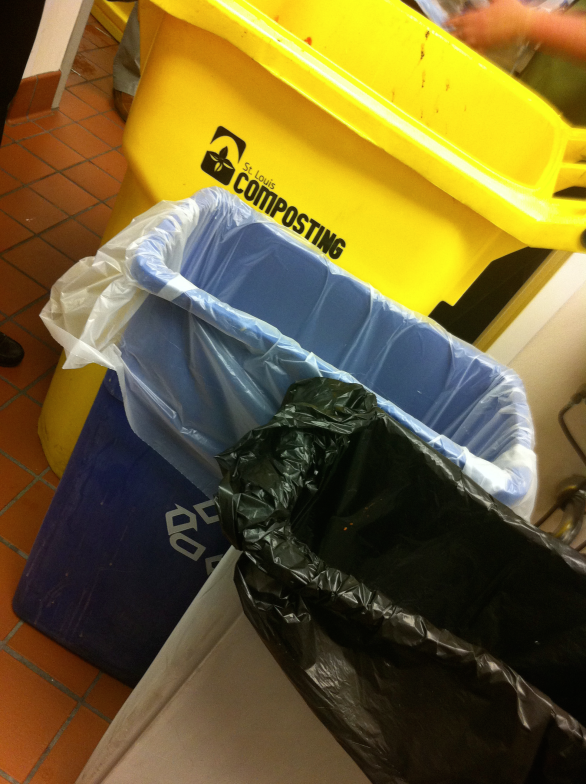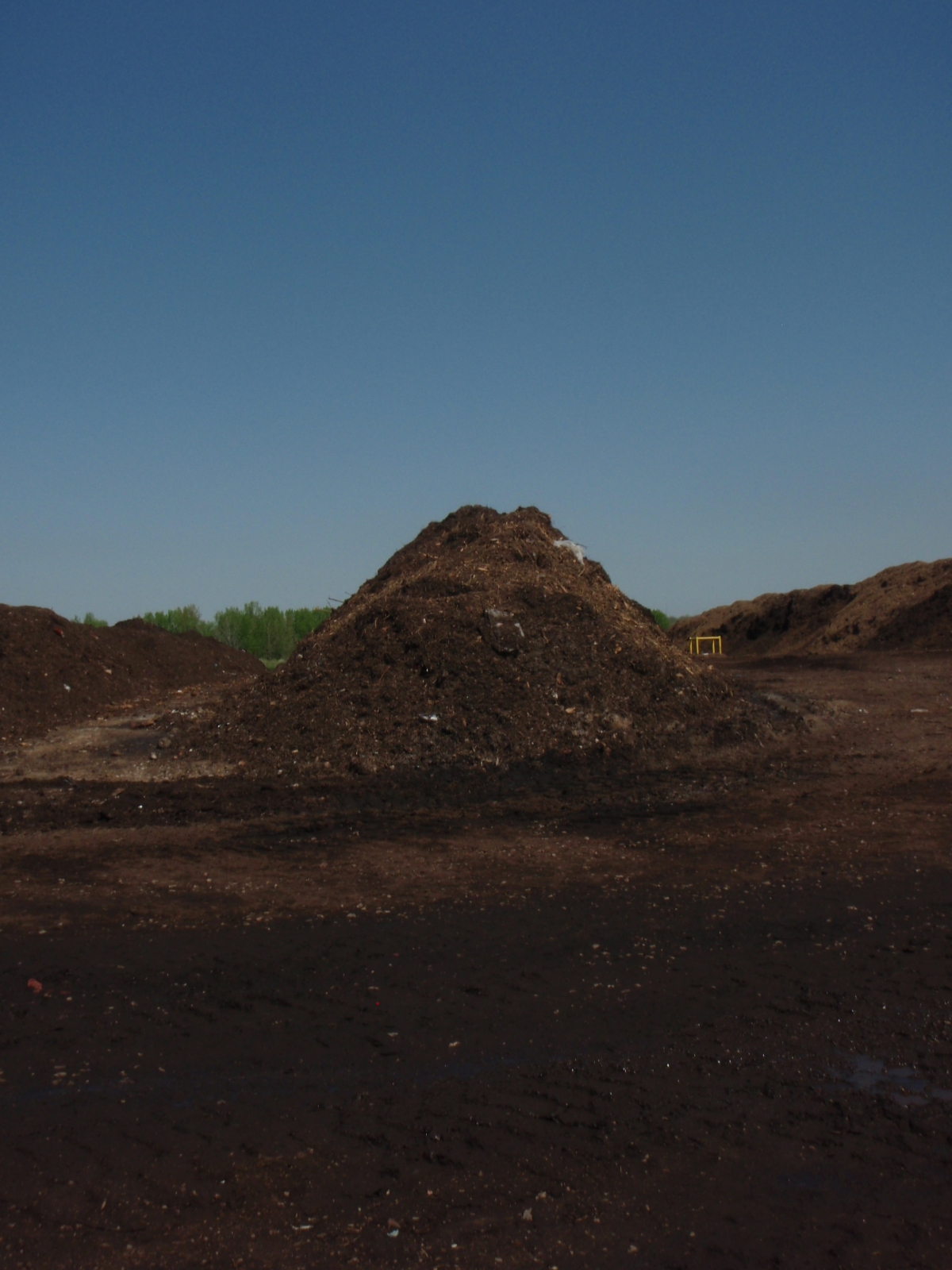I was recently in St. Louis for a sustainability education conference and part of the trip was a learning journey about food waste. We started the day at a Sodexo client partner location, followed the waste in transit to St. Louis Composting and then back to the Missouri Botanical Gardens where the compost was being used. Here is a glimpse into that day.

The food waste is picked up from area restaurants and transported by Blue Skies Recycling. This is an important and often absent link to getting food waste to composting locations. So now the food waste has arrived at St. Louis Composting, a 100 acre composting facility right on top of a landfill. I find the irony of that amusing and it makes me smile.

St. Louis Composting uses a wind row method to compost waste resulting in mixes that are available for purchase by the community. They make several blends like Black Gold, Rain Garden and Rooftop Garden mix. According to my notes, they handle about 300 tons of green waste, 200 tons of brown waste and 300 tons of food waste per week. They are seeking more food waste from area restaurants and they have the capacity to handle it although long-term they are concerned about space.

The compost sits for about 2 weeks and then a wind row turner comes in and turns the compost to increase oxygen which increases microbial activity and therefore heat. The compost maintains a 130-160 degree temperature. The compost “recipe” changes based on the amount of brown, green and food ingredients available as well as the weather. Water is added if additional moisture is needed and any runoff is collected in a runoff pond. You know the compost is ready when the temperature starts to drop.

This was the first time I’ve visited a wind row composting facility of this size. I was struck by the lack of smell and general cleanliness or organization. I’ve seen food waste. I’ve smelled food waste. Neither are pretty and I expected something a little messier (for lack of a better word). I was struck by the mixture of science, technology and intuition it takes to create great compost and St. Louis Composting has it all.
Following the compost, we end back at the botanical gardens where compost is used to enrich the soil and grow the amazing plants and flowers. The gardens were amazing and I don’t think a single picture I took will do them justice but I feel obligated to leave you with at least one.


Cool!
Franklin Park has espaliered fruit trees too. I’m not sure I have the nerve to train a plant so properly but the method is great for small spaces.
Ahh! I wasn’t aware of the term espaliered. Thanks for sharing! I also have to get to Franklin Park more often and enjoy that wonderful place!